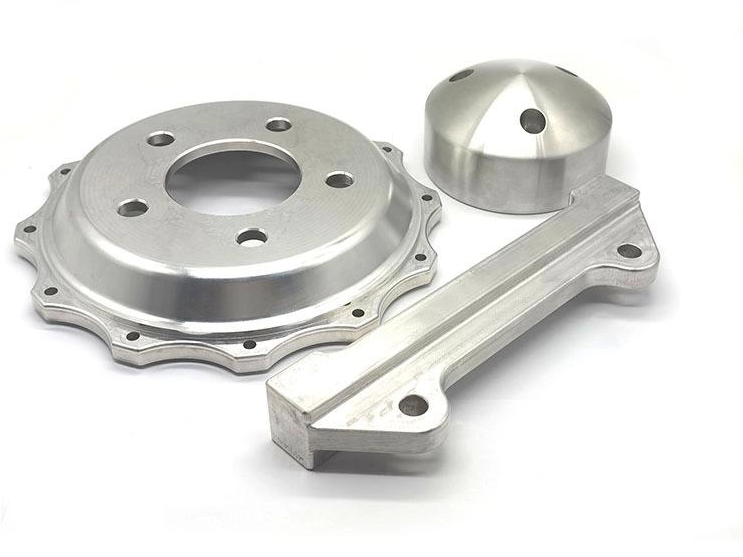
Introduction
Extruded aluminum has become a fundamental material in various industries due to its versatility, strength, and lightweight properties. One common concern among engineers and manufacturers is whether extruded aluminum will rust over time, especially when exposed to different environmental conditions. Understanding the corrosion behavior of aluminum is crucial for ensuring the longevity and integrity of structures and components made from this material. In this article, we will delve into the properties of extruded aluminum, its resistance to corrosion, and the factors that may influence its durability. For further insights into Aluminum Extrusion processes and applications, continue reading as we explore this topic in depth.
Understanding Aluminum and Oxidation
Aluminum is the third most abundant element in the Earth's crust and is known for its excellent strength-to-weight ratio and corrosion resistance. Unlike iron and steel, which readily rust when exposed to oxygen and moisture, aluminum reacts differently. When aluminum is exposed to the atmosphere, it forms a thin, protective layer of aluminum oxide on its surface. This oxide layer acts as a barrier that prevents further oxidation of the underlying metal, effectively protecting it from corrosion.
The formation of this oxide layer is a natural phenomenon that occurs almost instantaneously when aluminum is exposed to air. This passive layer is adherent, non-flaking, and self-repairing if damaged, which makes aluminum highly resistant to corrosion in many environments. The protective qualities of the aluminum oxide layer are one of the reasons why extruded aluminum is widely used in construction, transportation, and other industries where durability is essential.
The Composition of Aluminum Oxide Layer
The aluminum oxide layer that forms on the surface is typically between 2 to 4 nanometers thick. Despite its minimal thickness, it provides substantial protection against various forms of corrosion. The layer is also stable across a wide pH range, although it can be susceptible to attack in highly acidic or alkaline environments. Understanding the nature of this oxide layer is crucial for engineers who design aluminum components intended for use in harsh conditions.
The Process of Extrusion
Extrusion is a manufacturing process where aluminum billets are heated and pushed through a die to create objects with a fixed cross-sectional profile. This process allows for the creation of complex shapes that would be difficult or impossible to achieve with other manufacturing methods. Extruded aluminum profiles are used in applications ranging from architectural frameworks to automotive components.
One of the advantages of the extrusion process is that it does not compromise the inherent corrosion-resistant properties of aluminum. In fact, the process can enhance certain material characteristics, such as strength and surface finish. For those interested in the capabilities of aluminum extrusion, detailed information can be found at Aluminum Extrusion.
Post-Extrusion Treatments
After extrusion, aluminum profiles often undergo various treatments to improve their performance and appearance. Common treatments include anodizing, powder coating, and painting. Anodizing, in particular, enhances the thickness of the natural oxide layer, providing even greater resistance to corrosion and wear. These treatments can be tailored to the specific environmental conditions the aluminum will face, further ensuring its longevity.
Aluminum's Resistance to Rust
Rust is a term specifically used for the corrosion of iron and steel, resulting in iron oxide compounds that can flake off and weaken the metal structure. Since aluminum does not contain iron, it does not rust in the traditional sense. Instead, aluminum forms aluminum oxide, which, as previously mentioned, serves as a protective layer to prevent further corrosion.
Therefore, extruded aluminum will not rust like iron or steel. However, under certain conditions, aluminum can undergo other forms of corrosion. Recognizing these potential forms of corrosion is important for the correct application and maintenance of aluminum products.
Types of Aluminum Corrosion
While aluminum is highly resistant to corrosion, it is not entirely immune. Some types of corrosion that can affect aluminum include:
Galvanic Corrosion: Occurs when aluminum is in electrical contact with a more noble metal in the presence of an electrolyte.
Pitting Corrosion: Localized corrosion that leads to small pits on the surface, often due to chloride ion exposure.
Crevice Corrosion: Occurs in confined spaces where the oxygen concentration is low, and moisture is present.
Intergranular Corrosion: Attacks the grain boundaries of the metal, usually due to impurities or improper heat treatment.
Understanding these corrosion mechanisms is essential for preventing them through proper design, material selection, and protective measures.
Factors Affecting Aluminum Corrosion
Several environmental and material factors can influence the corrosion behavior of extruded aluminum. These include:
Environmental Exposure
Exposure to marine environments, industrial pollutants, or acidic rain can increase the risk of corrosion. Chloride ions present in saltwater are particularly aggressive towards aluminum, leading to pitting corrosion. In such environments, additional protective measures may be necessary.
Material Composition
The alloying elements in aluminum can affect its corrosion resistance. For example, the 6xxx series alloys, which contain magnesium and silicon, offer a good balance of strength and corrosion resistance. Selecting the appropriate aluminum alloy is crucial for the intended application.
Surface Finish and Treatments
Surface imperfections or contaminants can serve as initiation sites for corrosion. Therefore, maintaining a clean surface and applying protective coatings can significantly enhance corrosion resistance. Anodizing and powder coating are effective methods for providing an additional barrier against corrosive elements.
Design Considerations
Designing with proper drainage and avoiding crevices where moisture can accumulate will reduce the potential for corrosion. Ensuring that aluminum components are not in direct contact with incompatible metals can prevent galvanic corrosion.
Protective Measures for Extruded Aluminum
To maximize the lifespan of extruded aluminum components, several protective strategies can be employed:
Anodizing
Anodizing thickens the natural oxide layer on the aluminum surface, enhancing its corrosion resistance and allowing for dyeing the surface for aesthetic purposes. This process is particularly useful for components exposed to harsh environments.
Coatings and Paints
Applying protective coatings such as powder coating or specialized paints can provide an additional barrier against environmental factors. These coatings also offer the benefit of customization in color and texture.
Regular Maintenance
Routine cleaning to remove contaminants and inspection for signs of corrosion can prevent minor issues from developing into significant problems. Maintenance schedules should be adapted based on the operating environment of the aluminum components.
Proper Installation Practices
Using appropriate fasteners and insulating materials when joining aluminum to other metals can prevent galvanic corrosion. Ensuring that assemblies are designed to minimize water retention will also reduce corrosion risk.
For those interested in protective accessories and installation components, consider exploring options at Aluminum Extrusion.
Conclusion
Extruded aluminum is a highly durable material that does not rust in the traditional sense due to the formation of a protective aluminum oxide layer. While aluminum is resistant to many forms of corrosion, certain environments and conditions can pose challenges. By understanding the factors that affect aluminum corrosion and implementing appropriate protective measures, the longevity of extruded aluminum components can be ensured.
Incorporating best practices in material selection, design, and maintenance will maximize the benefits of using extruded aluminum in various applications. The versatility and resilience of aluminum make it an excellent choice for engineers and designers looking to create long-lasting, corrosion-resistant structures and products. For more detailed information on aluminum extrusion technologies and services, visit Aluminum Extrusion.
"}









